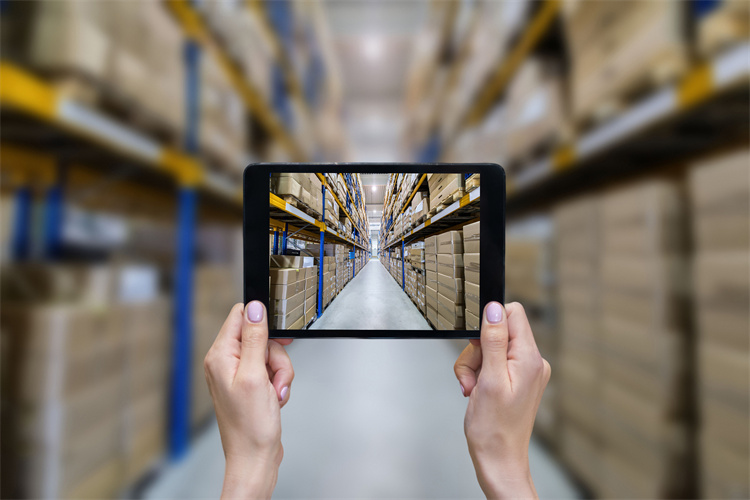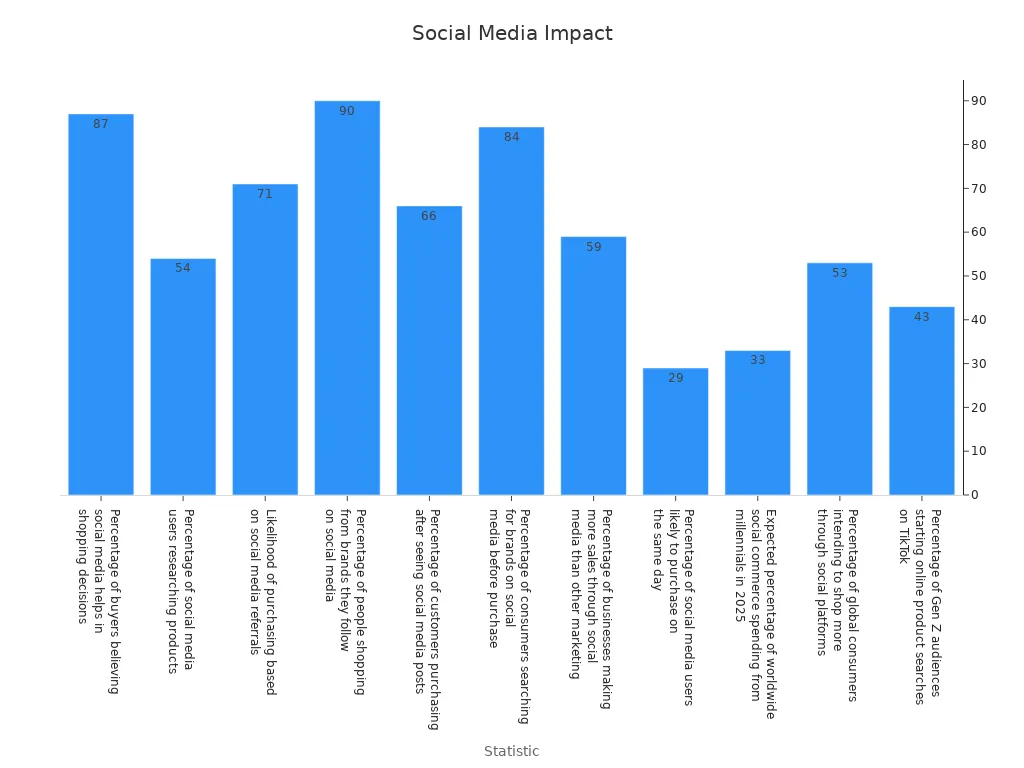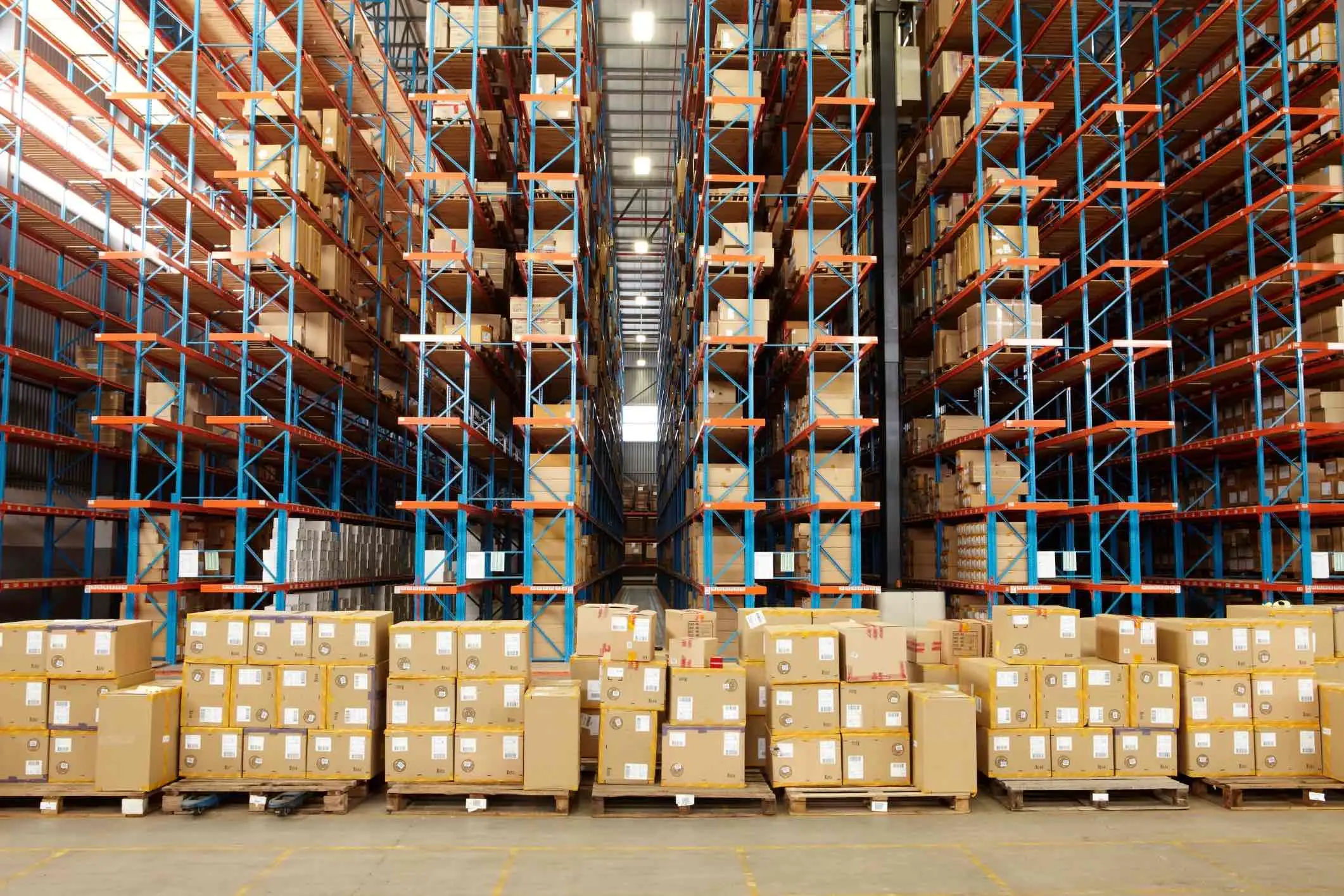Emerging E-Commerce Trends Shaping the Future in 2025

Online shopping and E-Commerce are changing faster than ever before. By 2027, online sales are expected to exceed $8 trillion. In 2023, more than 2.64 billion people made purchases through E-Commerce platforms. This highlights the growing significance of online shopping. Understanding 2025 shopping trends will help streamline the buying process for customers.
Key Takeaways
Use AI to make shopping more personal. AI helps suggest items people might like, making them happier and boosting sales.
Try augmented reality (AR) to improve online shopping. AR lets people see how products look in their space, helping them feel sure about buying.
Offer flexible payment choices like Buy Now, Pay Later (BNPL). This helps shoppers handle money better and can lead to more sales.
Technology-Driven Changes in Online Shopping
Online shopping is changing fast with new technology. By 2025, cool ideas will change how we shop online. Tools like artificial intelligence (AI) and augmented reality (AR) will make shopping easier and more fun.
AI and Smarter Shopping
AI and machine learning help make shopping personal. These tools study what you like and buy. Then, they suggest items just for you. For example, AI can increase sales by 915% and make people spend 3% more. Companies using AI have grown profits by 15% and cut marketing costs by 20%.
Personalized shopping is now a must. About 76% of people get upset when stores don’t offer custom choices. By 2030, AI could help stores earn 30% more money. This shows why using AI is key to keeping customers happy and staying ahead in online shopping.
AR and Virtual Shopping Fun
AR is changing how we see products online. It lets you try clothes or see furniture in your room before buying. This helps you feel sure about your choices and reduces doubts.
The AR shopping market might grow from $3.4 billion in 2023 to $11.6 billion by 2028. More smartphones and the need for personal shopping drive this growth. Studies show AR makes shopping exciting and helps you learn more about products. Younger shoppers love AR for its realness and unique experience.
Voice Shopping and Smart Helpers
Voice search and smart assistants are making shopping easier. Devices like Alexa and Google Assistant let you find items, check prices, and buy with your voice. By 2025, voice shopping will be a big part of online sales.
Smart assistants also learn what you like. They suggest items, remind you of past buys, and tell you about deals. Voice tech makes shopping faster and simpler for everyone.
Consumer-Centric 2025 E-Commerce Trends
Personalized Shopping Journeys
In 2025, online shopping will feel more personal. Stores use data to match your likes and needs. This makes shopping easier and more fun. When you visit a site, you’ll see items you might like. Emails may suggest products based on what you’ve browsed before. These methods are helpful and effective.
Sites with custom features get 48% more visitor interest.
Special buttons work 202% better than plain ones.
When stores focus on personalization, they gain 20% more loyal customers. Using data helps businesses find new buyers 23 times faster. It also keeps six times more shoppers coming back. By meeting your needs, brands build trust and loyalty.
Flexible Payment Solutions and BNPL
Flexible payments, like Buy Now, Pay Later (BNPL), make shopping easier. You can buy things now and pay later without stress. In 2023, BNPL was worth $378.3 billion globally. Over 60% of people have tried it, showing its popularity.
Statistic | Value |
|---|---|
Global market size of BNPL industry (2023) | $378.3 billion |
Percentage of people who have tried BNPL | 60% |
Estimated number of BNPL users worldwide (2022) | 360 million |
Percentage of users concerned about financial risks | 66% |
Number of companies offering BNPL services | Over 200 |
In the U.S., BNPL reached $65.2 billion in 2024. The UK market may grow to $54.5 billion by 2034. In China, BNPL is part of big platforms, worth $21.3 billion in 2024. Flexible payments give you control over spending and help stores sell more.
Subscription Models Driving Growth
Subscriptions are becoming a big part of online shopping. They make life easier for you and bring steady money for businesses. From monthly product boxes to special content, subscriptions offer personal and regular experiences.
Here are key facts about subscriptions:
Metric | Description |
|---|---|
Customer Retention Rate | Shows how well subscriptions keep customers happy and loyal. |
Customer Acquisition Cost | Tracks how much it costs to get new subscribers. |
Customer Lifetime Value | Measures how much money a customer brings over time. |
Market Growth Projection | Predicts strong growth for subscription-based shopping worldwide. |
Subscriptions focus on keeping customers and building loyalty. For you, they save time and offer convenience. This makes them great for both shoppers and businesses.
Sustainability and Ethical E-Commerce Practices
Green E-Commerce and Eco-Friendly Packaging
Sustainability is now a big focus in online shopping. Many stores are using eco-friendly ways to meet customer needs. Green products are selling 2.7 times faster than others. Over 78% of people care about sustainability, and 55% will pay more for it. Packaging is also changing. In 2023, the sustainable packaging market was worth $271.86 billion. It is expected to grow by 7.67% yearly until 2028.
Online stores are using greener packaging more often. By 2024, eco-friendly packaging could be worth $35.6 billion. More people want green products, and B2C sales are growing fast. You’ll see more brands offering eco-friendly choices to cut waste and help the planet.
Ethical Branding and Transparent Supply Chains
Ethical branding is changing online shopping trends. Brands with clear supply chains see up to 18% more demand. Shoppers trust companies that share how they make their products. For instance, Patagonia’s openness boosted sales by 16%. Coca-Cola’s transparency improved loyalty by 12%.
Younger buyers, like millennials, are leading this change. About 73% of them will pay extra for sustainable goods. Being open builds trust and keeps customers loyal. This benefits both shoppers and businesses.
Circular Economy and Resale Platforms
The circular economy is changing how we shop. Resale platforms were worth $30 billion in 2023 and may reach $92 billion by 2032. Eco-friendly shoppers and better mobile tech drive this growth. Buying second-hand helps reduce waste and pollution.
Apps and AI make resale platforms easier to use. These tools help you find good second-hand items while staying eco-friendly. As this trend grows, you’ll have more ways to buy and sell used goods online.
Social and Mobile Commerce Growth

Social Shopping and Influencer Power
Social media is changing how people shop online. Social shopping mixes online buying with social media fun. Influencers help by showing products to their followers. They make products seem trustworthy and easy to like. Apps like Instagram and TikTok lead this trend. They have features like posts you can shop from and live demos.
Here’s how social shopping is growing:
Statistic | Value |
|---|---|
Buyers who think social media helps with shopping | |
People buying from brands they follow on social media | 90% |
Buying chances based on social media referrals | 71% |
Influencers also help brands get noticed and trusted. For example, Huda Kattan’s posts helped brands reach millions of people. This teamwork between influencers and social shopping is changing online buying.
Mobile-First Plans for E-Commerce
Mobile shopping is now a big part of online buying. By 2025, 75% of internet use will be on phones. Many people like shopping apps because they are quick and simple. Mobile shopping sales might reach $2.51 trillion by 2025.
Key facts about mobile shopping:
Phones now bring more internet traffic than computers.
Online shopping could grow to $8 trillion by 2027.
60% of shoppers like apps more than websites.
Stores are focusing on mobile-friendly plans to help you shop better. They are making websites work well on phones and creating easy-to-use apps.
Livestream Shopping and Instant Fun
Livestream shopping mixes fun and real-time buying. You can watch live demos, ask questions, and buy right away. This makes shopping feel exciting and urgent, especially with special deals.
Livestream shopping is growing fast:
35% of people bought from a livestream last year, up from 13%.
Real-time chats make you feel closer to the brand.
Limited-time offers during livestreams push quick buys.
Apps like TikTok and Instagram are leading this fun way to shop. Livestream shopping isn’t just a trend—it’s the future of online buying.

Marketplace and B2B E-Commerce Growth
Online Marketplaces and Special Platforms
Online marketplaces are now a big part of e-commerce. They make up over 60% of global online sales. By 2027, 59% of all online sales will happen here. These platforms are popular because they offer many products and easy shopping.
Special platforms for specific needs are also growing fast. These focus on certain shoppers and build loyal customers. For example, niche marketplaces in the DACH region tripled from 2015 to 2022. This shows people want more personal shopping options.
Statistic Description | Value | Year/Projection |
|---|---|---|
Marketplaces' share of global e-commerce sales | Over 60% | 2023 |
Growth in sales on online marketplaces | 18% | 2023 |
Projected eCommerce sales through marketplaces | 59% | By 2027 |
Ads and Media for Online Growth
Stores use ads to grow online sales. In 2023, display ads made up 30.1% of the market. These ads use pictures to grab attention. Search ads, which grow 9% each year, help find shoppers ready to buy. Retailer-owned media networks now earn 59.4% of ad money. These tools make it easier to find products and boost sales.
Global Shopping and Cross-Border Growth
Buying from other countries is changing online shopping. Cross-border sales now make up one-third of all e-commerce. In the EU, sellers from other countries grew by 25% since 2014. This gives you more choices and helps businesses grow.
Key trends include:
Better systems to connect buyers and sellers.
Using AI and blockchain for smarter shopping tools.
Green practices to build trust and stay competitive.
B2B e-commerce is also growing fast. It could rise from $28.86 trillion in 2025 to $60.49 trillion by 2030. This shows how important global shopping is becoming for businesses everywhere.

JUSDA Solutions
To provide you with professional solutions and quotations.
By 2025, e-commerce will grow with tech and eco-friendly ideas. Global online sales might hit $10 trillion by 2027. Trends like mobile shopping and custom experiences drive this growth. Since 82% of people care about the planet, businesses must adapt. They need to create smart solutions to stay ahead and succeed.
See Also
Exploring Five Key Trends Shaping Supply Chain Efficiency
Revealing Innovative Strategies for Cross-Border Supplier Relationships
Examining How Technology Influences Current Market Trends
Transforming Future Logistics Through Digital Technology Innovations
Enhancing Global E-commerce Success Through Supply Chain Visibility
